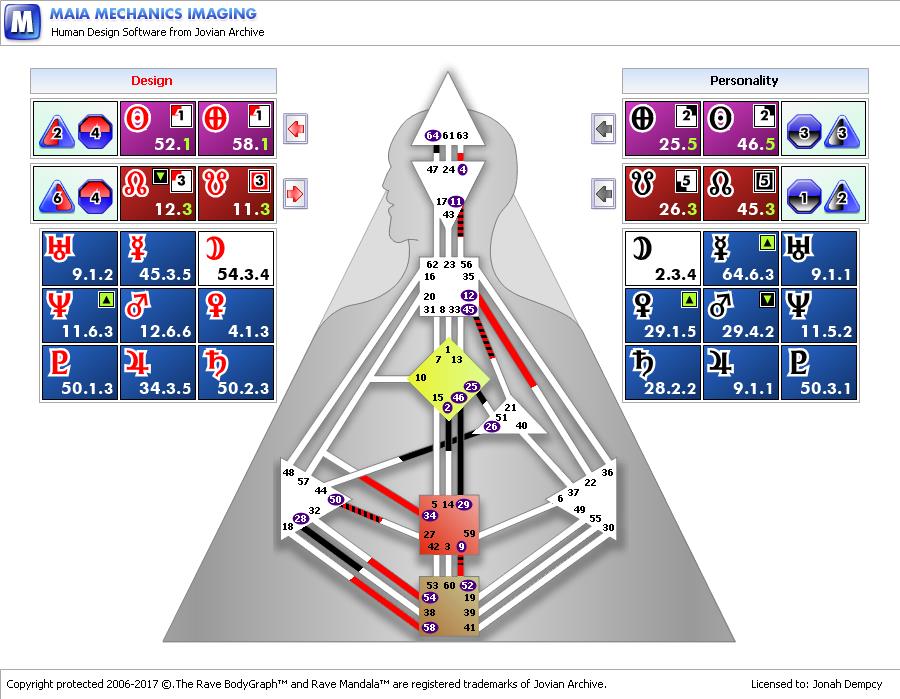Human Design on:
[Wikipedia]
[Google]
[Amazon]
 Human Design is a New Age-inspired
Human Design is a New Age-inspired Stars Aligned, Part 1: Applying The Third Eyeball Test to the 2018–19 New Orleans Pelicans Roster
thebirdwrites.com, retrieved 8 August 2019.
 Human Design is a New Age-inspired
Human Design is a New Age-inspired pseudo-scientific
Pseudoscience consists of statements, beliefs, or practices that claim to be both scientific and factual but are incompatible with the scientific method. Pseudoscience is often characterized by contradictory, exaggerated or unfalsifiable claim ...
practice. Its proponents describe it as a holistic self-knowledge system. Some describe it as similar to the Myers–Briggs personality test (the introvert/extrovert archetypes). Its effectiveness has not been confirmed by peer reviewed research.
Human Design combines astrology
Astrology is a range of Divination, divinatory practices, recognized as pseudoscientific since the 18th century, that claim to discern information about human affairs and terrestrial events by studying the apparent positions of Celestial o ...
, the I Ching
The ''I Ching'' or ''Yi Jing'' (, ), usually translated ''Book of Changes'' or ''Classic of Changes'', is an ancient Chinese divination text that is among the oldest of the Chinese classics. Originally a divination manual in the Western Zho ...
, Kabbalah
Kabbalah ( he, קַבָּלָה ''Qabbālā'', literally "reception, tradition") is an esoteric method, discipline and Jewish theology, school of thought in Jewish mysticism. A traditional Kabbalist is called a Mekubbal ( ''Məqūbbāl'' "rece ...
and Vedic philosophy
upright=1.2, The Vedas are ancient Sanskrit texts of Hinduism. Above: A page from the '' Atharvaveda''.
The Vedas (, , ) are a large body of religious texts originating in ancient India. Composed in Vedic Sanskrit, the texts constitute the ...
, centering around the division of personalities into four energy types alleged to indicate how someone is supposed to exchange energy with the world: Manifestors, Generators, Projectors, and Reflectors. It was originated by Alan Robert Krakower who published a book called ''The Human Design System'' under the pseudonym Ra Uru Hu in 1992. Krakower developed the Human Design system following a mystical experience in 1987. Human Design purports to be a self-knowledge method which does not have any specific religious dogma or affiliation. Despite this, it has been described by theologian J. R. Hustwit as a "transreligious project" that is "breathtaking in scope" and synthesizes seven or more traditions. It has also been described as a psychological counseling instrument and "a comprehensive and personalized map of your unique energy and life blueprint, guiding you towards self-awareness, personal growth, and empowerment."
In Human Design analysis, planets are displayed in a type of horoscope
A horoscope (or other commonly used names for the horoscope in English include natal chart, astrological chart, astro-chart, celestial map, sky-map, star-chart, cosmogram, vitasphere, radical chart, radix, chart wheel or simply chart) is an ast ...
called a bodygraph. The bodygraph shows the 64 hexagrams of the I Ching
The ''I Ching'' or ''Yi Jing'' (, ), usually translated ''Book of Changes'' or ''Classic of Changes'', is an ancient Chinese divination text that is among the oldest of the Chinese classics. Originally a divination manual in the Western Zho ...
at various locations on the body. It is sometimes shown within a mandala
A mandala ( sa, मण्डल, maṇḍala, circle, ) is a geometric configuration of symbols. In various spiritual traditions, mandalas may be employed for focusing attention of practitioners and adepts, as a spiritual guidance tool, for e ...
, overlaid on the 12 signs of the zodiac
The zodiac is a belt-shaped region of the sky that extends approximately 8° north or south (as measured in celestial latitude) of the ecliptic, the Sun path, apparent path of the Sun across the celestial sphere over the course of the year. ...
. In addition, it claims to facilitate "deep access to bodily, generational and inter-dimensional intelligence."thebirdwrites.com, retrieved 8 August 2019.
References
{{Reflist, 30em Astrology